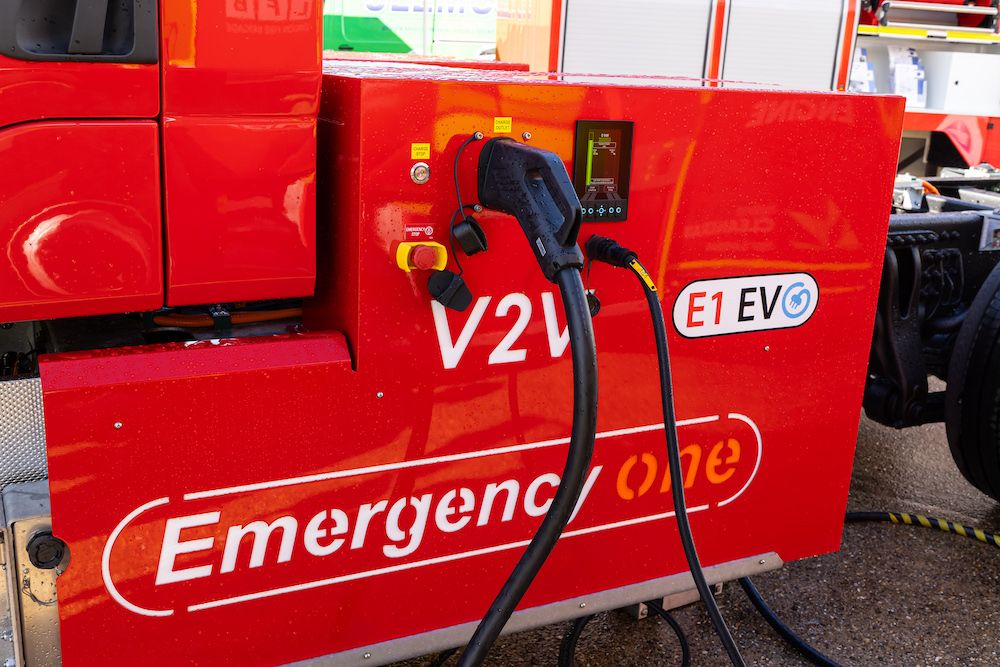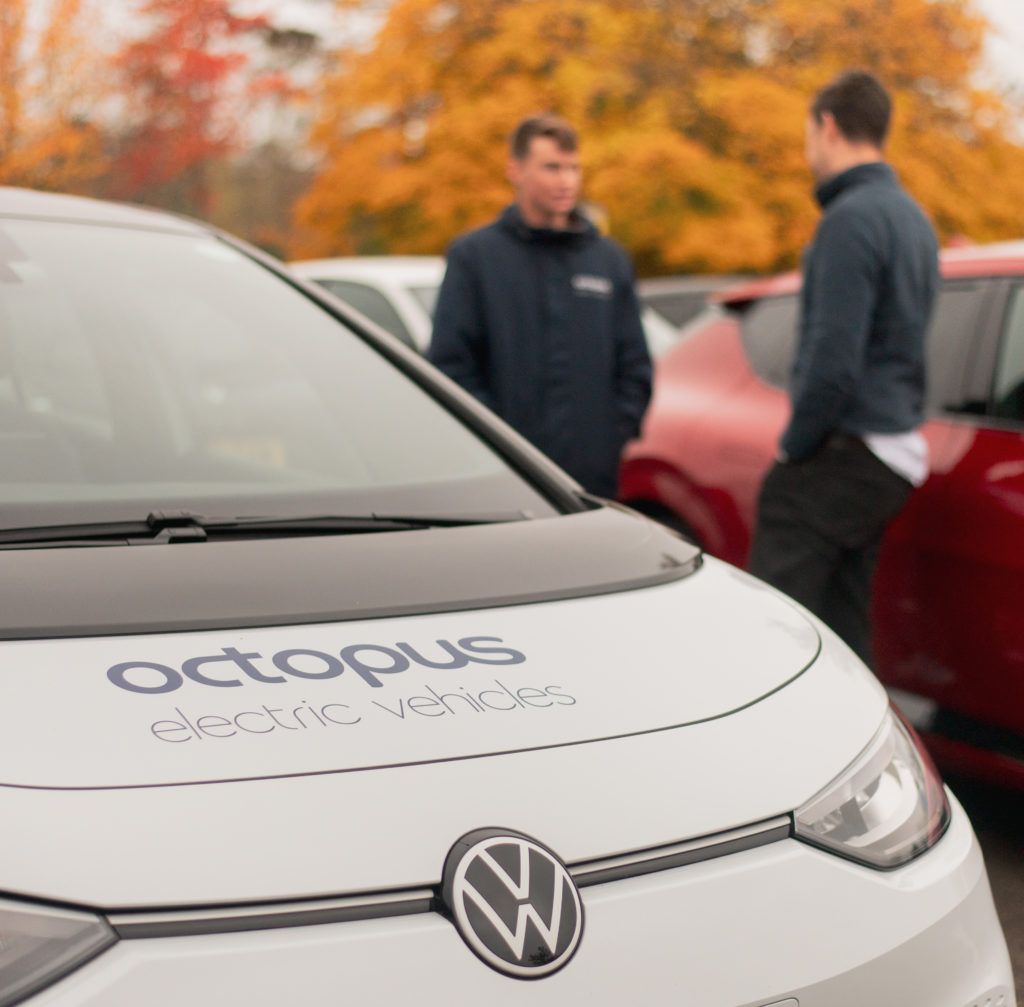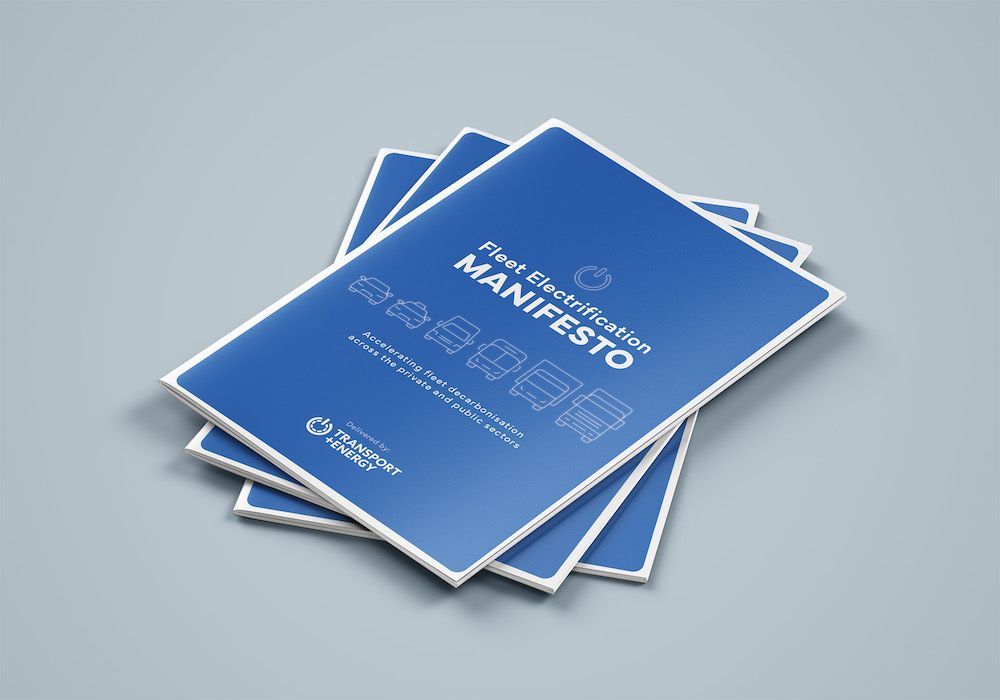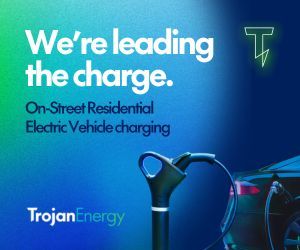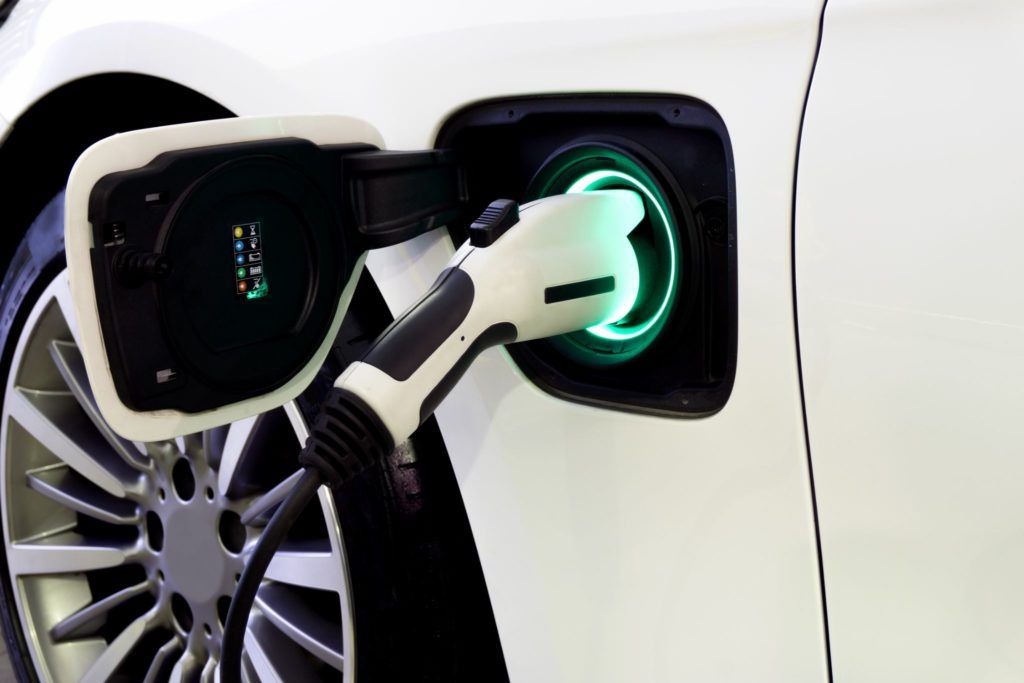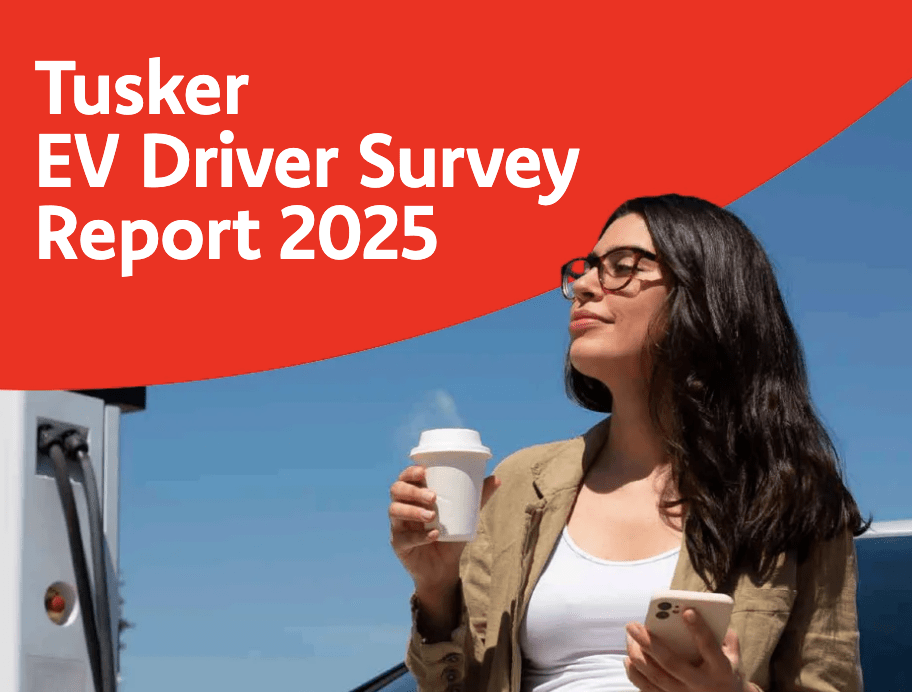UK-based engineering specialist Equipmake has showcased a new emergency vehicle charging system at Cenex Expo.
Work started on the ZEPA V2V initiative a year ago, with the project led by Equipmake and funded by the Department for Business and Trade (DBT), facilitated by the Advanced Propulsion Centre UK (APC).
It has combined the expertise of Emergency One, London Fire Brigade and Cenex to specify, develop and demonstrate an energy management system enabling fire services to migrate to fully battery-electric fleets.
A key challenge for electric fire appliances is pumping water for extended periods, a task that often requires on-site refuelling with diesel vehicles,
The ZEPA V2V solution is an auxiliary power system that connects the batteries of multiple electric fire engines. It allows an electric ‘bowser vehicle’ to supply power directly to a firefighting appliance, enabling continuous operation without interruption – with zero emissions at the point of use.
The high-power vehicle-to-vehicle system can be fitted to any EV and can transfer power at over 200kW. Connection to other vehicles is via the CCS2 protocol.
While developed principally for firefighting, the technology can be applied across other industries. In off-highway settings, a truck loaded with batteries could serve as an ‘electric bowser’, swapping in for recharged units to deliver 24-hour continuous operation for construction, mining, or remote industrial work.
The same principle could benefit logistics depots, disaster relief operations, or any sector requiring uninterrupted high-power output in the field. Cenex is investigating future market options for this technology as part of the project.
Ian Foley, CEO, Equipmake, commented:
“The ZEPA V2V project showcases how our advanced energy management systems can solve one of the biggest operational challenges in electrifying specialist heavy vehicles. For the firefighting sector, this technology means extended, uninterrupted, and entirely zero-emission pumping capability. Equipmake has been proud to lead on this project working side-by-side with our expert consortium partners, Emergency One, London Fire Brigade and Cenex. We look forward to the trial of the technology in the capital over the coming months.
“Beyond firefighting, the potential applications are enormous – from construction to disaster relief – wherever there’s a need for sustained high-power operations in the field. Equipmake’s position as a leader in the design, development and manufacture of efficient electric powertrain technology puts us at the forefront of enabling these industries to decarbonise without compromising performance.”
Elliot Boyce, Project Manager from Emergency One, said:
“As the UK’s leading manufacturer of fire appliances – and a trusted manufacturer to fire services across the globe – Emergency One is proud to remain at the forefront of innovation within the fire and rescue sector. Through close collaboration with key stakeholders and partial funding from the Advanced Propulsion Centre (APC), we’ve continued to advance our EV0 range, now introducing vehicle-to-vehicle (V2V) charging capability.
“London Fire Brigade is a key customer, and we’re honoured to supply their frontline pumping appliances. Following the successful delivery of their first electric vehicle, we’re delighted to provide a second – now enhanced with V2V functionality, further supporting their commitment to sustainable emergency response.”
APC CEO Ian Constance said:
“The Demonstrate grant enables UK businesses to rapidly develop automotive products with a clear route to market. It is great to see concepts that will go into real-world vehicles, helping the UK achieve its net zero goals.”
Steve Carroll, Head of Research and Technical Services, Cenex, said:
“ZEPA V2V showcases how innovation and collaboration can provide effective solutions to the challenges of decarbonising emergency services.
“By working closely with fire and rescue stakeholders, we are ensuring that this technology is not only technically sound but also relevant to operational needs. This approach paves the way for achieving zero emission resilience across blue light fleets and beyond.”
Image courtesy of Equipmake



